 Expert's opinion
Expert's opinion
Expert's opinion
The article is a subjective view on this topic written by writers specializing in medical writing.
It may reflect on a personal journey surrounding struggles with an illness or medical condition, involve product comparisons, diet considerations, or other health-related opinions.
Although the view is entirely that of the writer, it is based on academic experiences and scientific research they have conducted; it is fact-checked by a team of degreed medical experts, and validated by sources attached to the article.
The numbers in parenthesis (1,2,3) will take you to clickable links to related scientific papers.
7 Pregnancy Ab Workout: Effectively Safe Exercises In 2024
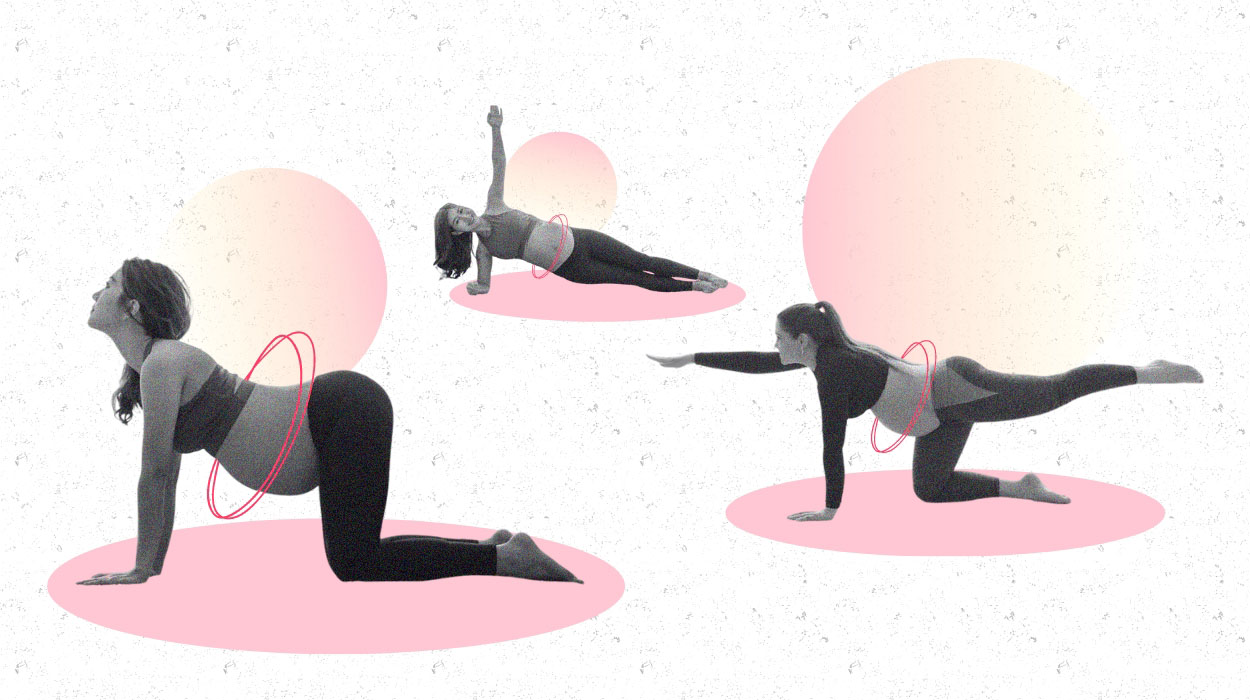
Pregnancy may be, in some ways, exciting for certain women. Still, the physiological changes during those nine months may impose undue limits on some lifestyles. This is especially so if a pregnant woman wants to be physically active, as high-intensity physical activities may harm the mother and/or the fetus.
Of course, it is important to consider the remaining belly fat after pregnancy. Although it can help to use a fat burner post-partum, pregnant women can work on toning their abdominal muscles to maintain their figure after giving birth. Exercising during pregnancy is even better as it can reduce complications that may occur during or after childbirth.
That raises the question, “Which pregnancy ab workout is best?”
Best Pregnancy Safe Ab Workouts
Here are some safe ab exercises for pregnant women:
Best Pregnancy Ab Workout To Try
Are you expecting and eager to maintain a strong core throughout your pregnancy journey? Here are the best pregnancy ab workout designed to help you stay fit and support your growing belly!
Bird Dog
This simple exercise primarily targets your abs and middle and lower back. Since your legs are also involved, your glutes and hip flexors will also be toned.
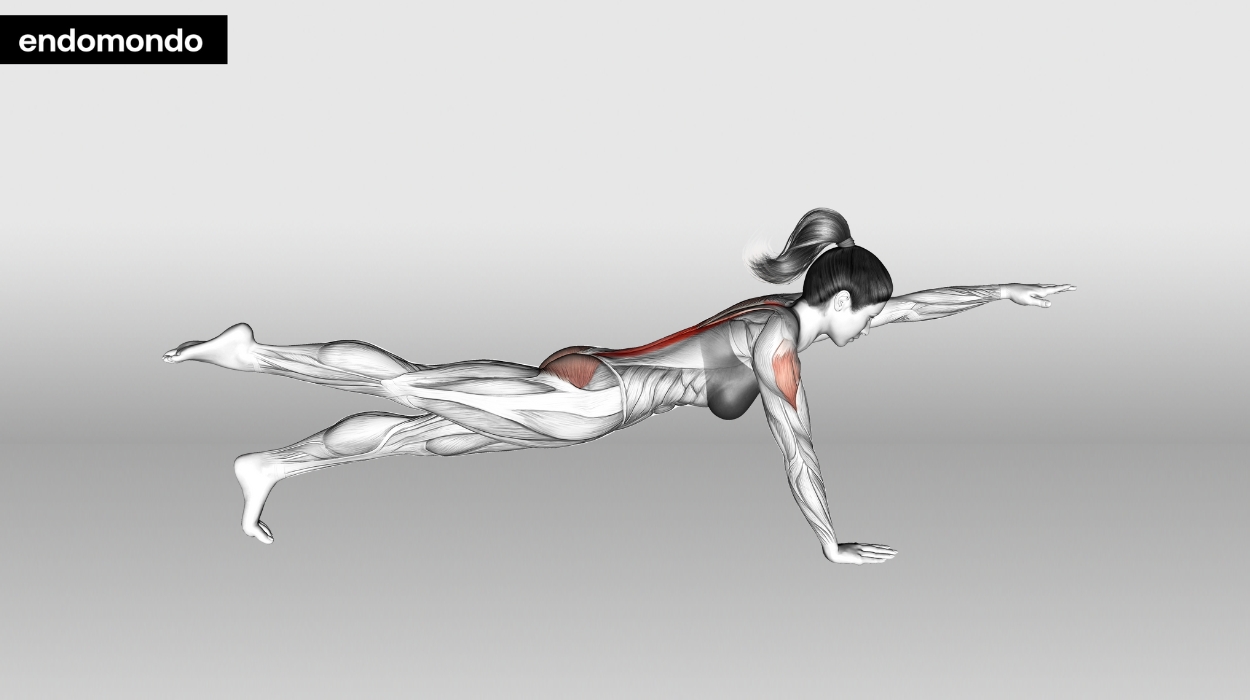
How to do:
- Start on your hands and knees, with both underneath your shoulders and hips, respectively.
- Extend your left leg behind you and your right arm in front of you simultaneously. Hold this position for three to five seconds, then return to the starting position. Switch sides and repeat.
Tips:
- Maintain a neutral spine and engage your core to support your back during pregnancy.
- Perform this exercise slowly and with control, avoiding abrupt movements or arching your back.
- Listen to your body, and if you experience any discomfort, stop the exercise immediately.
Optimal Sets and Reps: Three sets of 10 repetitions for each side.
Side Plank
The downward position of the traditional plank position may not be the safest for some pregnant women. Fortunately, this sideways variation provides a safe way to tone your abs and work on your obliques like a normal plank will.
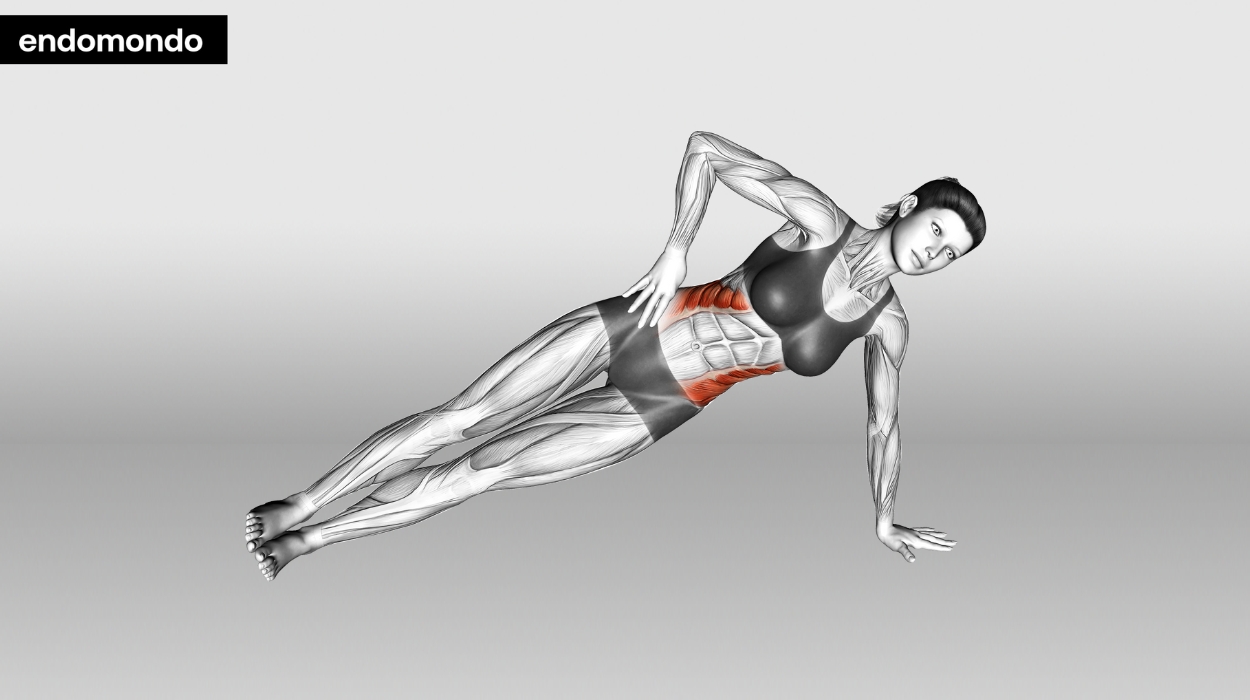
How to do:
- Start by lying on one side with your body extended.
- Use your forearm to lift your body off the ground to form a straight line from your shoulders to your ankles. Brace your abs.
- Maintain this position for as long as possible before slowly lowering yourself back into the starting position.
- Switch to the other side and repeat this same process. Hold on each side for 20 to 30 seconds.
Tips:
- Ensure that your supporting elbow is directly beneath your shoulder to maintain proper alignment and stability.
- Engage your core muscles throughout the exercise to provide added support to your lower back and pelvis.
- Use a yoga mat or cushioning under your elbow for added comfort and to prevent discomfort or strain.
Optimal Sets and Reps: Three sets of eight to 10 repetitions per side.
Standing Side Crunches
Like planking, regular crunches may not be safe for pregnant women as they squeeze the abdomen and may pressure the fetus. Standing side crunches provide a proper abdominal workout for core muscles.
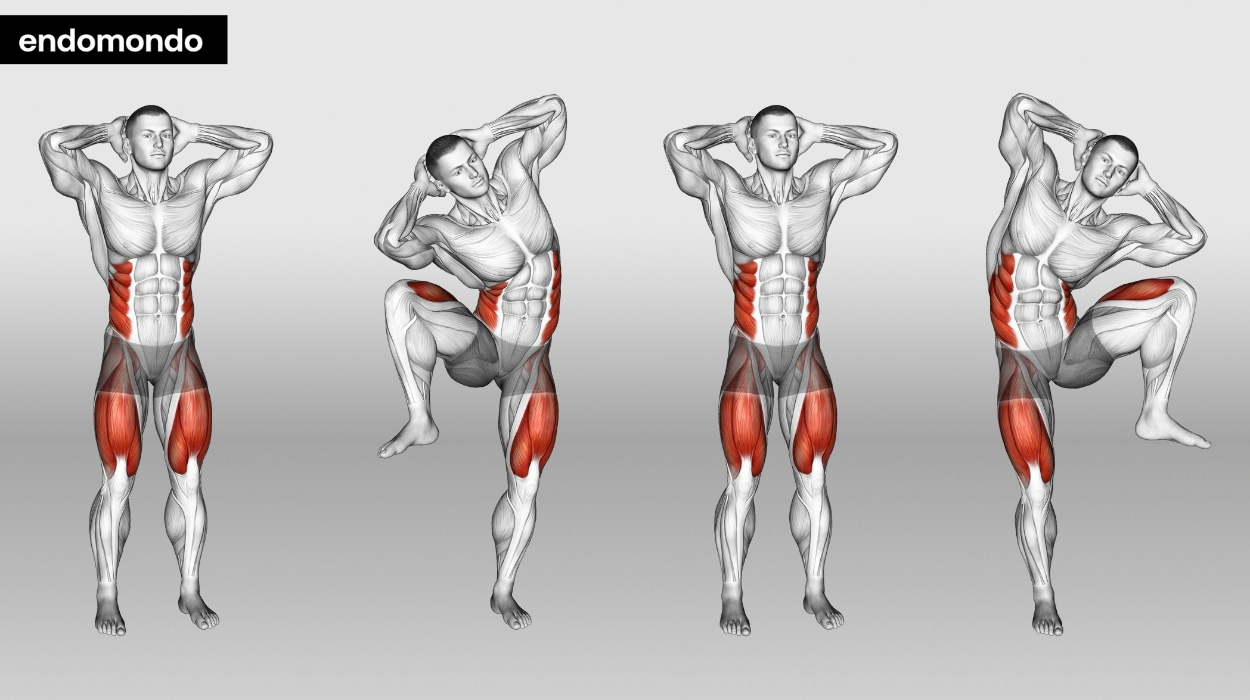
How to do:
- Start by standing with your knees slightly bent and your feet hip-width apart. Keep your hands behind your head.
- Shift your weight to your left leg. Lift your right knee up towards your right elbow, bending the right side of your waist.
- Slowly lower your right leg to return to the starting position.
Tips:
- Keep your movements controlled and within a comfortable range of motion, avoiding any strain or overexertion.
- Use a sturdy support, like a chair or wall, for balance if needed.
- Ensure proper breathing by exhaling as you crunch and inhaling as you return to the starting position to maintain a steady rhythm.
Optimal Sets and Reps: Three sets of 10-12 repetitions per side.
Side-Lying Crunch
For those who would prefer lying down while doing their crunches, this sideways variation of traditional crunches is another good alternative for pregnant women looking to strengthen their core muscles.
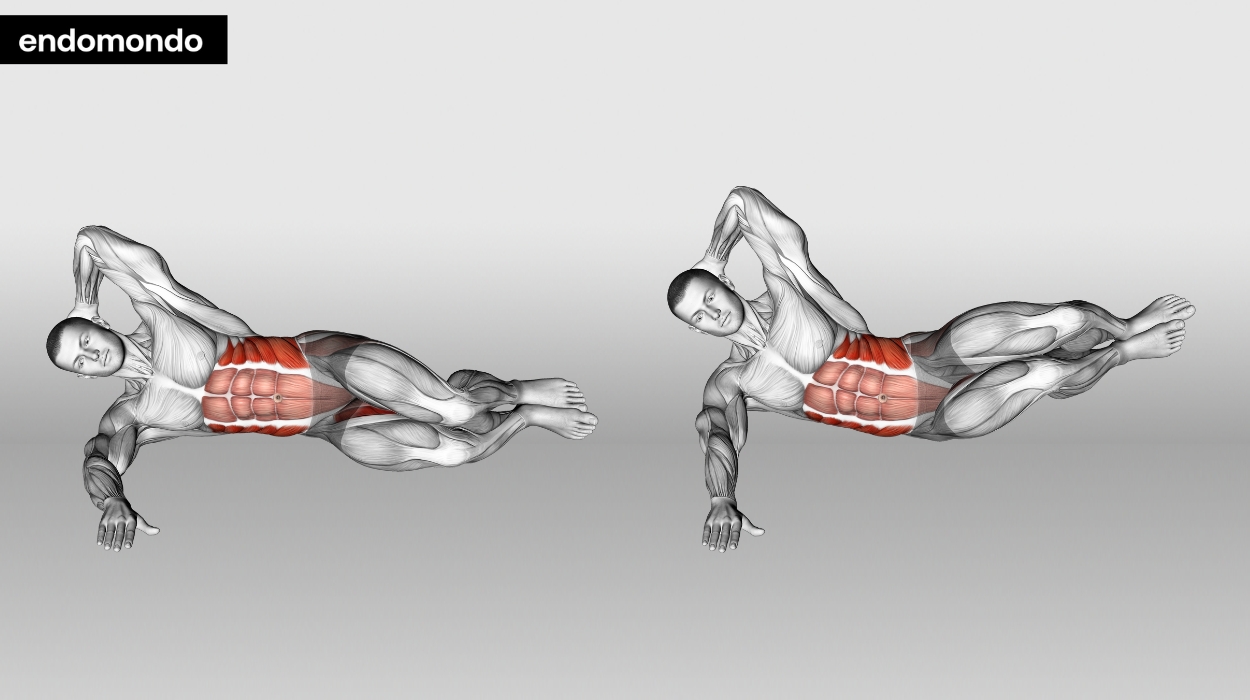
How to do:
- Start by lying on one side with your knees slightly bent. Keep your right hand behind your head.
- Bend at your torso as you try to bring your right elbow towards your knees, then slowly lower yourself to the starting position.
- Switch to the other side and repeat the process again.
Tips:
- Support your head with a cushion or pillow to maintain a comfortable neck position.
- Perform this exercise with slow and controlled movements, avoiding any sudden jerks or excessive twisting.
- Keep your legs comfortably bent and stacked on top of each other for stability and balance.
Optimal Sets and Reps: Two sets of 10 to 12 repetitions
Sitting Knee Lifts
For those with lower stamina, this simple sitting exercise is perfect for pregnant women. Although it mostly targets the glutes and hip flexors, your abdominal muscles are also involved.
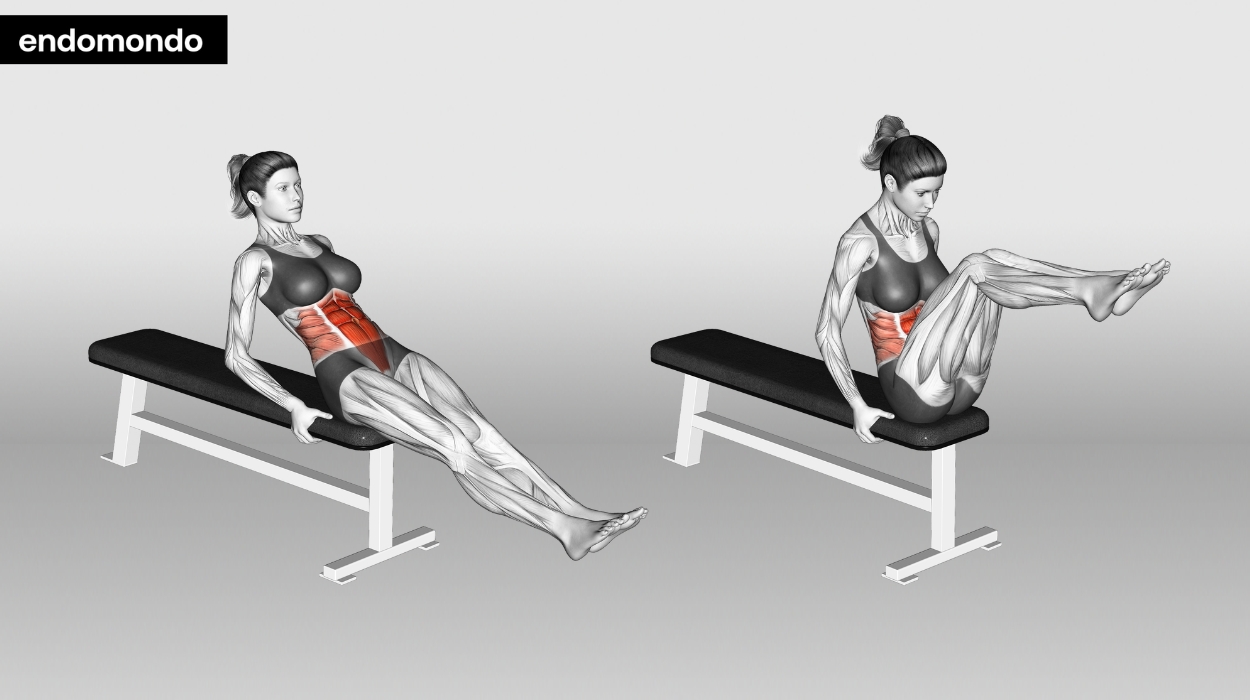
How to do:
- Sit upright on a bench or a chair, ensuring not to arch your back. Engage your core muscles, and keep your feet flat on the ground.
- Lift one bent leg and hold for three seconds before slowly returning to the starting position.
- Repeat this process for the other leg.
Tips:
- Sit on a stable surface with back support to maintain balance and prevent strain on your lower back.
- Execute the knee lifts with controlled, deliberate movements, avoiding any sudden jerks or excessive force.
- Maintain a relaxed and controlled breathing pattern, exhaling as you lift your knees and inhaling as you lower them, to maintain a steady rhythm.
Optimal Sets and Reps: Four sets of six to eight repetitions
Cat Cows
This might seem like a simple yoga pose, but the required motion still makes it an effective ab workout that is safe for pregnant women.
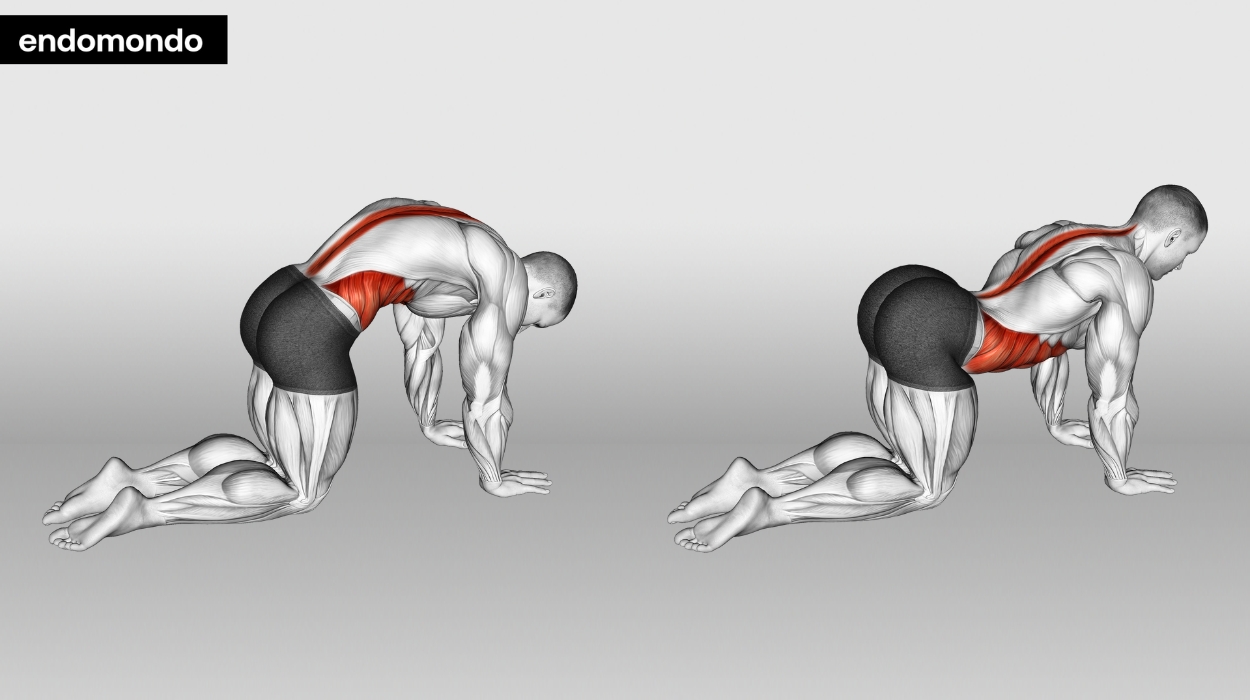
How to do:
- Start on your hands and knees, with both underneath your shoulders and hips, respectively.
- Inhale as you slowly arch your back and lift your head up. You should be looking upward in this position.
- Exhale and round out your spine without crunching your abdomen. Lower your head; you should be looking at the floor in this position.
Tips:
- Perform this exercise on a comfortable surface, such as a yoga mat, to support your knees and wrists.
- Focus on gentle and fluid movements, avoiding any abrupt or forceful transitions between the cat and cow positions.
- Ensure your wrists are aligned under your shoulders and your knees are under your hips for proper form.
Optimal Sets and Reps: Three sets of 10-12 repetitions.
Sumo Squats
Squats alone are a safe and effective ab workout during pregnancy, but the sumo variation may be somewhat easier with a larger belly. Not only can these improve core strength, but sumo squats can help open up the hips to make natural childbirth easier.
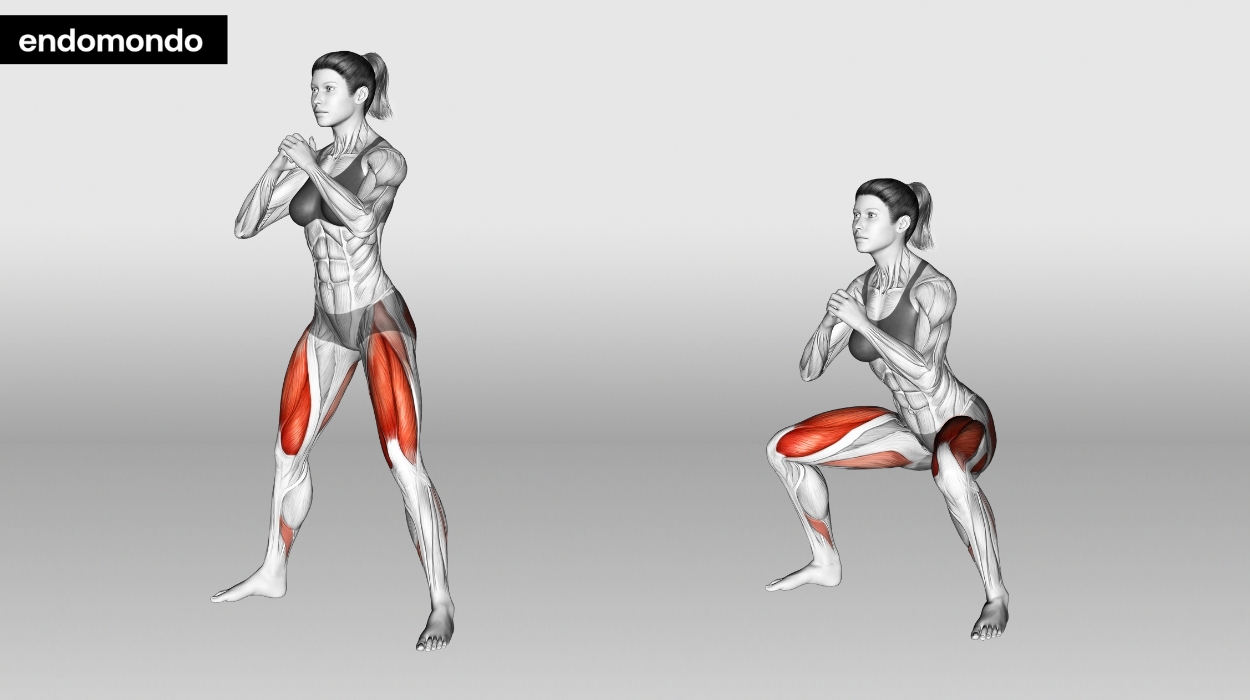
How to do:
- Start by standing with your feet hip-width apart. Keep your hands behind your head.
- Lower yourself to squat, but only go as far as you are comfortable. Keep your legs outward during the motion.
- Squeeze your glutes and return to the starting position.
Tips:
- Keep your back straight and chest up throughout the exercise to maintain proper posture.
- Maintain a wide stance with your feet turned outward to reduce stress on the pelvis and knees.
- Perform the squats with controlled movements, avoiding any sudden or deep squats.
Optimal Sets and Reps: Three sets of ten to 15 repetitions.
Can You Do Ab Exercises While Pregnant?
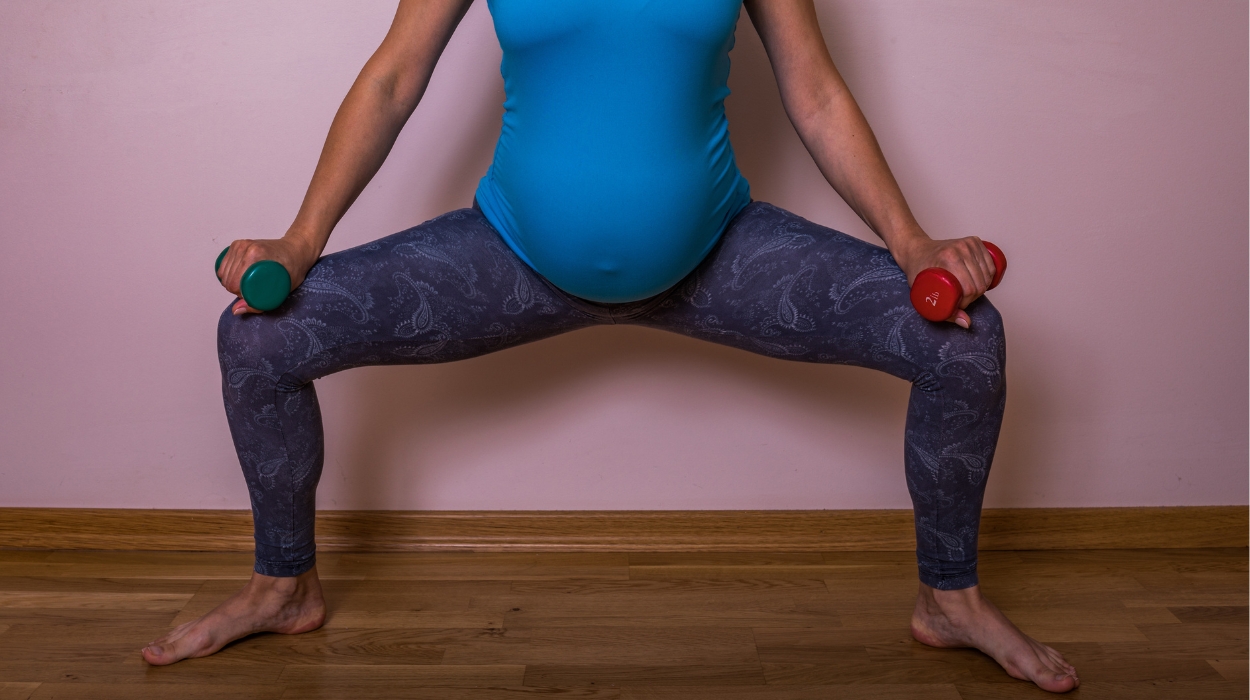
Yes. Experts encourage pregnant women[1] to exercise as long as they remain safe and don’t overexert themselves, even in some cases of high-risk pregnancies.
An increase in intra-abdominal volume is natural during pregnancy, as the body has to make room for the growing fetus. This can result in the thickening[2] of abdominal muscles to adapt to the body’s changes. Thus, strengthening their abs and pelvic floor muscles may help make labor easier[3] and reduce the need for a C-section in some cases, but scientific evidence of this is somewhat limited.
Core Exercises To Avoid During Pregnancy
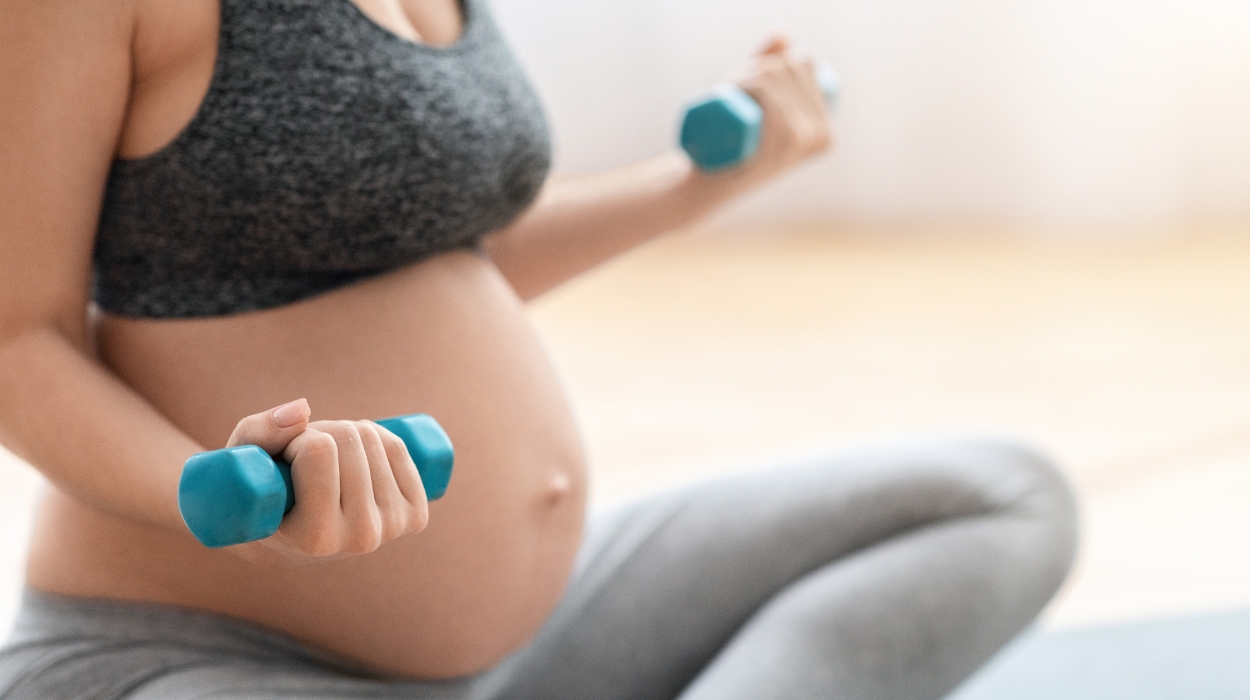
As you may expect, not all core exercises are safe for pregnancy and can place unnecessary stress on your body. In fact, some exercises are only safe during a specific trimester and not the full pregnancy. Some exercises may hurt the child or lead to pregnancy complications.
As a general rule of thumb, pregnant women should avoid any exercises involving spinal flexion, back arching, and twisting of the hips and shoulders:
- Full sit-ups.
- Traditional crunches.
- Upward-facing dog.
- Double leg lifts.
- Bicycles.
- Traditional planks – modified versions that don’t put too much pressure on the belly are safe.
Tips For Pregnancy-Safe Ab Exercises
Know Your Limits
Even with all the ab workouts out there that are safe for pregnant women to do, you should be careful not to overdo it as you could risk causing increased pressure on your core. This may affect the baby or even lead to complications in pregnancy.
Maintain Proper Posture
When performing some of these pregnancy-safe ab workouts, arching your back may be tempting even when you’re supposed to keep your spine straight. However, this may lead to additional pressure and strain on your abdomen. Also, maintaining proper upper body posture during sitting and standing exercises can ensure good results.
Reduce Intensity In Later Trimesters
Most ab workouts for women are relatively safe during the first trimester. However, pregnant women may have to reduce the intensity of their exercises during the second and third trimesters to avoid unneeded pressure and stress on the abdomen.
This is due to the increase of intra-abdominal volume,[4] or IAV, that naturally occurs during pregnancy. This is what creates the appearance of a large belly in pregnant women that may get in the way of certain safe pregnancy ab exercises.
Eat A Healthy Diet
While not necessarily a safety tip, a healthy diet is still important when you’re pregnant and staying active. Be sure to eat foods high in various vitamins to replenish any nutrients that are used up during exercise. If necessary, supplements can help with post-partum weight loss caused by pregnancy weight gain.
The Bottom Line
An ab workout may seem like the last thing you’d want to do when you’re pregnant, but some studies have found that it can provide several health benefits related to the physiological changes of pregnancy. With so many simple and relatively easy options to choose from, you can still maintain a proper pregnancy ab workout routine and stay active from the first trimester to the third. As long as you do the exercises mentioned above safely, there is no reason to skip out on abdominal exercises during pregnancy.
Frequently Asked Questions
It is best to perform ab exercises as long as you are comfortable and do not feel pain.
Yes. Most ab exercises are still considered safe for pregnancy during the first trimester.
Yes, some variations of squats are considered safe.
You should stop exercising if you experience vaginal bleeding, dizziness, headache, increased shortness of breath, or chest pain.
+ 4 sources
Health Canal avoids using tertiary references. We have strict sourcing guidelines and rely on peer-reviewed studies, academic researches from medical associations and institutions. To ensure the accuracy of articles in Health Canal, you can read more about the editorial process here
- Mottola, M.F., Davenport, M.H., Stephanie-May Ruchat, Gregory A.L. Davies, Poitras, V.J., Gray, C.E., Alejandra Jaramillo Garcia, Barrowman, N., Adamo, K.B., Duggan, M., Barakat, R., Chilibeck, P., Fleming, K.G., Forte, M., Korolnek, J., Nagpal, T.S., Slater, L., Stirling, D. and Zehr, L. (2018). No. 367-2019 Canadian Guideline for Physical Activity throughout Pregnancy. [online] 40(11), pp.1528–1537. doi:https://doi.org/10.1016/j.jogc.2018.07.001.
- Carol Ann Weis, Nash, J., Triano, J.J. and Barrett, J. (2017). Ultrasound Assessment of Abdominal Muscle Thickness in Women With and Without Low Back Pain During Pregnancy. [online] 40(4), pp.230–235. doi:https://doi.org/10.1016/j.jmpt.2017.02.002.
- Hinman, S.K., Smith, K.L., Quillen, D.A. and Smith, K. (2015). Exercise in Pregnancy. [online] 7(6), pp.527–531. doi:https://doi.org/10.1177/1941738115599358.
- Petrenko Ap, Camil Castelo-Branco, D.V. Marshalov, Alexander Valerievich Kuligin, Mysovskaya, Y.S., Shifman, E.M. and Muhamed, A. (2020). Physiology of intra‐abdominal volume during pregnancy. [online] 41(7), pp.1016–1022. doi:https://doi.org/10.1080/01443615.2020.1820470.



